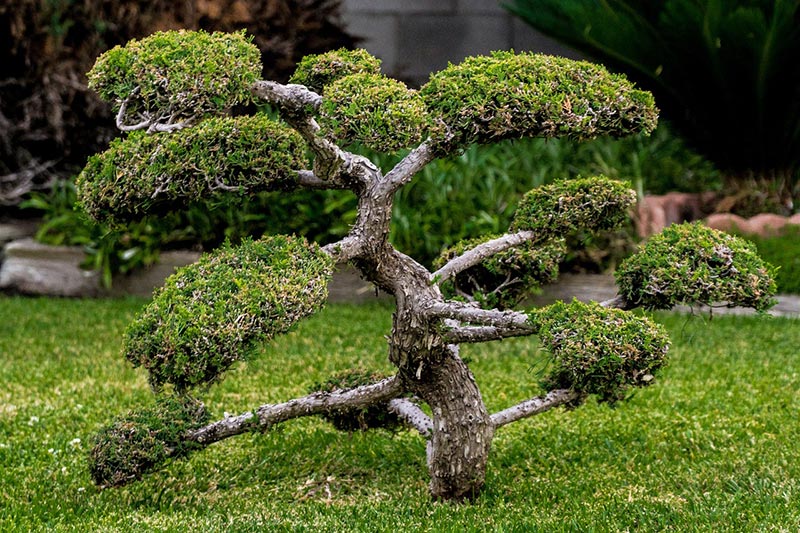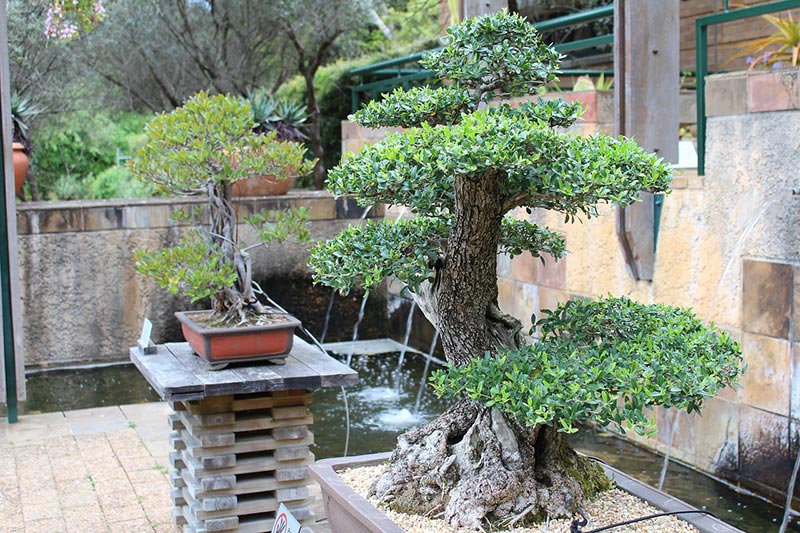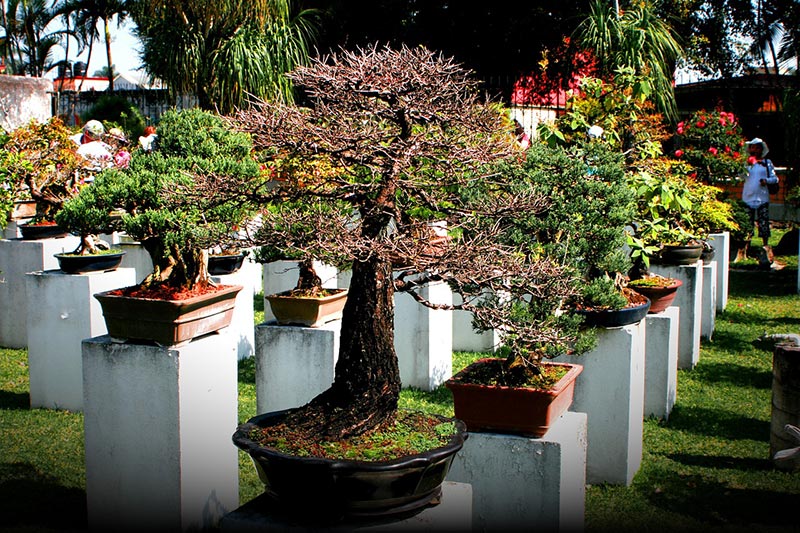How Big Do Bonsai Trees Get? (2025 Guide)
-

- Last updated:

Bonsai trees have been around for hundreds of years, and today, they are as popular as ever. If you like having a tiny piece of nature on your desk, this technique/art of growing miniature trees deserves all of your attention. But wait—how big do they actually get? How fast does the average bonsai tree grow?
What can you do to take proper care of it? We’ve got all the answers right here! First, we’ll cover the very concept and where it came from. Next, we’ll check out a detailed chart of bonsai tree classifications, sizes, and growth rates. Finally, we’ll talk about the best ways of measuring and growing it. Let’s get to it!
Facts About Bonsai Trees
Bonsai is a Japanese art form, a centuries-old technique of growing and training artificially dwarfed trees in a ceramic pot. It is based on penjing/penzai, the traditional Chinese art of depicting a large group of trees in miniature. Bonsai is more popular, though, as it takes less effort to train one single tree versus an entire landscape. Bonsai in Japanese means “tray planting”, or “a tree in a pot”.
So, how do you turn a regular tree into a bonsai? The answer is pruning. By trimming the tree at the right time and using specific tools (like wire), you can prevent it from growing in size while still creating the illusion of a mature tree, only in miniature form. Not every single tree out there can be a bonsai, though. The key here is to find a plant with perfect proportions. Otherwise, it simply won’t work.
And what’s the point of growing a bonsai tree? Unlike the vast majority of plant/tree cultivation techniques and practices, bonsai is never used to produce food, herbs, or medicine. The sole purpose of a bonsai tree is to create an aesthetically pleasing and accurately-shaped dwarf replica of a full-grown tree. Taking care of it brings peace, harmony, and balance—virtues of Zen Buddhism.

Bonsai Trees Classification and Size Chart
Did you know that the smallest bonsai trees can fit in your palm, while the biggest ones reach 80 inches/6.7 feet in height? That’s right! There are ten bonsai tree classifications out there and they all represent different sizes. They range from miniature to average to large. Here’s a quick look at approximate sizes and hand scales for the most popular bonsai classes:
| Bonsai Tree Classification | Approximate Three Size | Hand Scale | General Size |
| Keshitsubo | 1–3″ | Poppy-seed size | Miniature |
| Shito | 2–4″ | Fingertip size | Miniature |
| Mame | 2–6″ | Palm size | Miniature |
| Chohin | 5–8″ | One-handed bonsai | Miniature |
| Kumono | 6–10″ | One-handed bonsai | Miniature |
| Katade-mochi | 10–18″ | Two-handed bonsai | Average |
| Chiu or Chumono | 16–36″ | Two-handed bonsai | Average |
| Dai or Omono | 30–48″ | Four-handed bonsai | Large |
| Hachi-uye | 40–60″ | Six-handed bonsai | Large |
| Imperial | 60–80″ | Eight-handed bonsai | Large |
How Fast Do Bonsai Trees Grow?
The first thing to remember when planting a bonsai tree is that it needs time to grow. On average, it takes 5–6 years for it to reach a miniature size (given you water and fertilize it properly, of course). After that, you’ll have to wait for 10–15 extra years for it to turn into a medium-sized tree. Add 15–20 more years if you want a full-size bonsai. And what about the lifespan—how long do bonsai trees last?
Most of them can go on for 40–80 years, with some dwarfs living for hundreds of years. As for the growth rate, some species are quick to reach maturity, while others require more time. For example, Juniper bonsai trees grow 4–12 inches per year (as long as you take proper care of them). The Chinese Elm bonsai, in contrast, grows 25–36 inches in height every year, which makes it three times faster than Juniper.
Here’s a breakdown of the most popular bonsai species and their average growth per year:
- Jade: 2–3 inches
- Fukien Tea: 2–5 inches
- Azalea: 2–10 inches
- Wisteria: 2–10 inches
- Juniper: 4–12 inches
- Cotoneaster: 12–18 inches
- Ficus: 12–18 inches
- Maple: 12–24 inches
- Pine: 24–36 inches
- Chinese Elm: 24–36 inches

Factors Affecting the Size of Bonsai Trees
The very concept of bonsai trees involves using pruning and wiring to artificially halt the growth of the tree and make it look like a “mini copy” of a mature tree. So, the factors affecting its size are the tools that we use to tame its natural growth. With that said, if you don’t take proper care of a bonsai tree, it will wither and, eventually, die. We’re talking about watering, fertilizing the soil, and ensuring proper exposure to sunlight.
Tips for Taking Care of a Bonsai Tree
In contrast to popular belief, growing a bonsai tree isn’t a tedious task. You don’t have to be a seasoned gardener or landscaper to do it. However, since these miniature trees are planted in tiny ceramic pots, it’s very important to water them frequently and fertilize the soil to keep it rich in nutrients.
- How often do you water a bonsai plant? This depends on the species, size, and climate. Only water the tree when the soil gets slightly dry. Dip your finger(s) into the soil, approximately 0.5–1 inch deep. If the soil is dry, water it immediately. Keep pouring and don’t stop until the water escapes from the drainage holes. And remember: bonsai trees prefer above-average humidity levels.
- Bonsai trees need plenty of sunlight to stay healthy. Put the pot on the windowsill of a South-facing window. Make sure it sits right next to the window glass, not inches away from it, and gets 4–8 hours of sun. As for outdoor trees, make sure they get afternoon shade but lots of light during the day.
- For a bonsai tree to survive, you need to fertilize it generously. This is especially true during the growing season—early spring through October. Another thing to remember here is to always “feed” the tree the same nitrogen, phosphorus, and potassium mix/ratio instead of changing it for different seasons.

How to Measure Your Bonsai Tree
There’s nothing hard about this. As long as you have a measuring tape or a ruler, you can do it in less than a minute. Just make sure you’re measuring the height from the very top of the plant/foliage to the base of the tree’s trunk. The Japanese have a word for the base of a bonsai tree—Nebari—which means the surface roots. A quick note: younger bonsai trees don’t have surface roots.
So, if you see them, that means the tree is old. Yes, the more roots are visible on the surface of the soil, the older that tree is. And what about the diameter of the tree—how do you measure that? Again, a measuring tape is all you need. To do this right, measure the bonsai tree at 1–2 feet above the pot, where the trunk is the thickest.
Conclusion
When maintained and trained properly, bonsai trees can last for decades, bringing peace and serenity into your office, bedroom, or living room. One of the best things about bonsai trees is that while they do require dedication and care, once you get the hang of it, they don’t really need any “babysitting”.
Now, if you’re a bit worried that your tree is too small/big for a bonsai, use our detailed chart as your guide on sizes and growth rates. And if you don’t know how to measure a bonsai tree or which factors affect growth, we covered that as well. So, pick the right species, plant it properly, and enjoy your bonsai tree!
- BonsaiOutlet – Bonsai Tree Size Classification
- MinnesotaBonsaiSociety – Bonsai Classifications
- VirginiaStateUniversity – The Art of Bonsai
- What Are Nitrogen, Phosphorus and Potassium?
- How Long Do Bonsai Trees Take To Grow?
- Wikipedia – Bonsai Size Classifications
- BigBoyPlants – The Bonsai Pot Guide
- The importance of Nebari in bonsai
- BonsaiEmpire – Bonsai tree care
- Kiddle – Bonsai facts for kids
- MasterClass: Jade Plant Care Guide
- Wisteria A Mystery for Most Gardeners
- ArborDayFoundation – Formosa Azaleas
- ArborDayFoundation – Maple
- ArborDayFoundation – White Pine
- Juniper Bonsai Care Guide
- USDA – Chinese Elm
- Kansas Forest Service – Cotoneaster
- Fiddle Leaf Fig Growth Rate
- Org – Carmona retusa
Featured Image Credit: Danganhfoto, Pixabay
Contents

